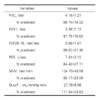1. Ryan CM, Schoenfeld DA, Thorpe WP, Sheridan RL, Cassem EH, Tompkins RG. Objective estimates of the probability of death from burn injuries. N Engl J Med. 1998. 338:362–366.
3. Thompson PB, Herndon DN, Traber DL, Abston S. Effect on mortality of inhalation injury. J Trauma. 1986. 26:163–165.
4. Shirani KZ, Pruitt BA Jr, Mason AD Jr. The influence of inhalation injury and pneumonia on burn mortality. Ann Surg. 1987. 205:82–87.
5. Trunkey DD. Inhalation injury. Surg Clin North Am. 1978. 58:1133–1140.
6. Herndon DN, Traber DL, Niehaus GD, Linares HA, Traber LD. The pathophysiology of smoke inhalation injury in a sheep model. J Trauma. 1984. 24:1044–1051.
7. Kinsella J, Carter R, Reid WH, Campbell D, Clark CJ. Increased airways reactivity after smoke inhalation. Lancet. 1991. 337:595–597.
8. Demarest GB, Hudson LD, Altman LC. Impaired alveolar macrophage chemotaxis in patients with acute smoke inhalation. Am Rev Respir Dis. 1979. 119:279–286.
9. Hallman M, Spragg R, Harrell JH, Moser KM, Gluck L. Evidence of lung surfactant abnormality in respiratory failure: study of bronchoalveolar lavage phospholipids, surface activity, phospholipase activity, and plasma myoinositol. J Clin Invest. 1982. 70:673–683.
10. Large AA, Owens GR, Hoffman LA. The short-term effects of smoke exposure on the pulmonary function of firefighters. Chest. 1990. 97:806–809.
11. Darling GE, Keresteci MA, Ibanez D, Pugash RA, Peters WJ, Neligan PC. Pulmonary complications in inhalation injuries with associated cutaneous burn. J Trauma. 1996. 40:83–89.
12. Whitener DR, Whitener LM, Robertson KJ, Baxter CR, Pierce AK. Pulmonary function measurements in patients with thermal injury and smoke inhalation. Am Rev Respir Dis. 1980. 122:731–739.
13. Khoo AK, Lee ST, Poh WT. Tracheobronchial cytology in inhalation injury. J Trauma. 1997. 42:81–85.
14. American Thoracic Society. Single-breath carbon monoxide diffusing capacity (transfer factor): recommendations for a standard technique--1995 update. Am J Respir Crit Care Med. 1995. 152:2185–2198.
15. Pauwels RA, Buist AS, Calverley PM, Jenkins CR, Hurd SS. Global strategy for the diagnosis, management, and prevention of chronic obstructive pulmonary disease: NHLBI/WHO Global Initiative for Chronic Obstructive Lung Disease (GOLD) Workshop summary. Am J Respir Crit Care Med. 2001. 163:1256–1276.
16. Heimbach DM, Waeckerle JF. Inhalation injuries. Ann Emerg Med. 1988. 17:1316–1320.
17. Mlcak R, Desai MH, Robinson E, Nichols R, Herndon DN. Lung function following thermal injury in children: an 8-year follow up. Burns. 1998. 24:213–216.
18. Tasaka S, Kanazawa M, Mori M, Fujishima S, Ishizaka A, Yamasawa F, et al. Long-term course of bronchiectasis and bronchiolitis obliterans as late complication of smoke inhalation. Respiration. 1995. 62:40–42.
19. Herndon DN, Traber LD, Linares H, Flynn JD, Niehaus G, Kramer G, et al. Etiology of the pulmonary pathophysiology associated with inhalation injury. Resuscitation. 1986. 14:43–59.
20. Hubbard GB, Langlinais PC, Shimazu T, Okerberg CV, Mason AD Jr, Pruitt BA Jr. The morphology of smoke inhalation injury in sheep. J Trauma. 1991. 31:1477–1486.
21. Cox RA, Burke AS, Soejima K, Murakami K, Katahira J, Traber LD, et al. Airway obstruction in sheep with burn and smoke inhalation injuries. Am J Respir Cell Mol Biol. 2003. 29:295–302.
22. Pruitt BA Jr, Cioffi WG. Diagnosis and treatment of smoke inhalation. J Intensive Care Med. 1995. 10:117–127.
23. Nakae H, Tanaka H, Inaba H. Failure to clear casts and secretions following inhalation injury can be dangerous: report of a case. Burns. 2001. 27:189–191.
24. Bingham HG, Gallagher TJ, Powell MD. Early bronchoscopy as a predictor of ventilatory support for burned patients. J Trauma. 1987. 27:1286–1288.
25. Herndon DN, Barrow RE, Linares HA, Rutan RL, Prien T, Traber LD, et al. Inhalation injury in burned patients: effects and treatment. Burns Incl Therm Inj. 1988. 14:349–356.









 PDF
PDF ePub
ePub Citation
Citation Print
Print





 XML Download
XML Download